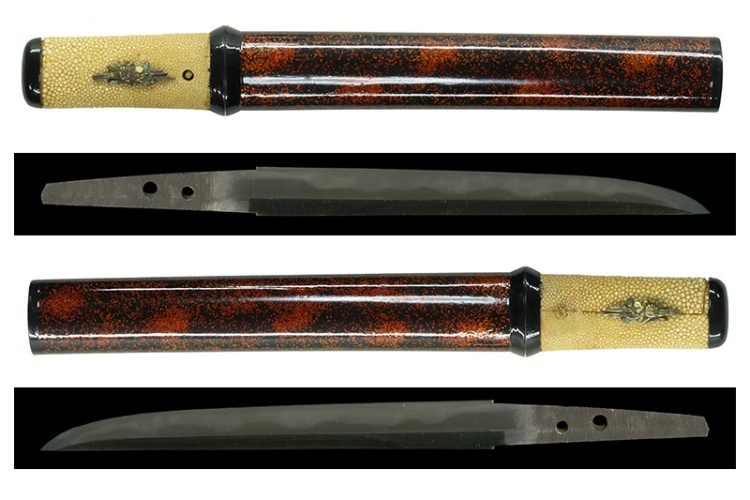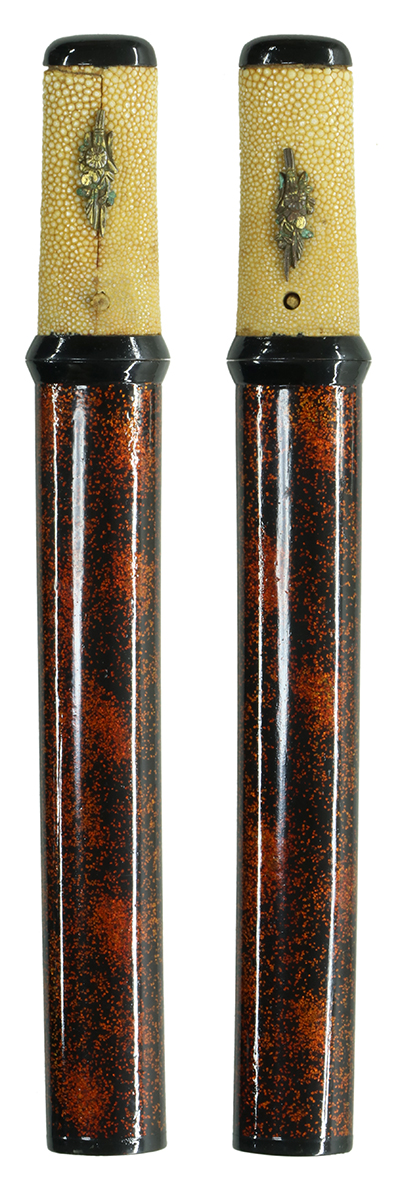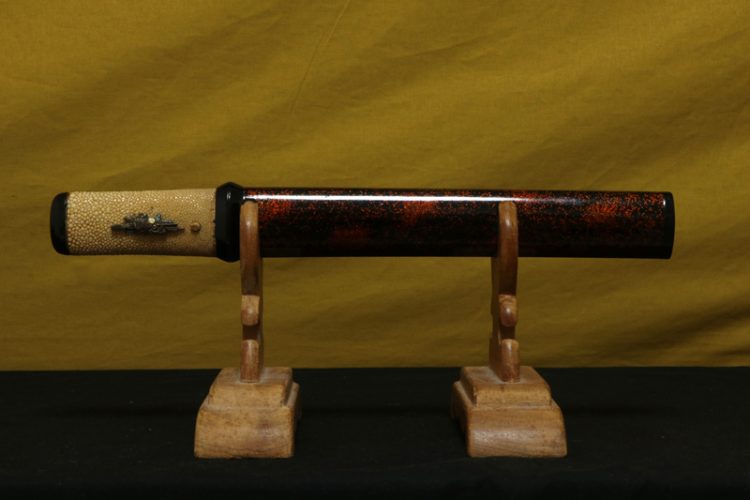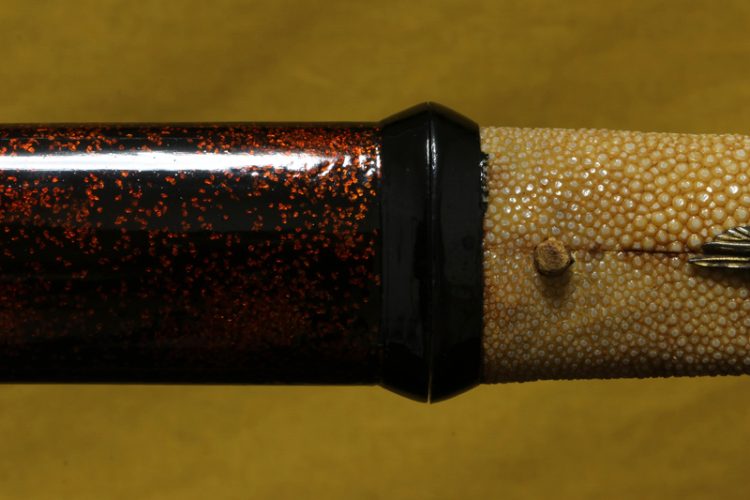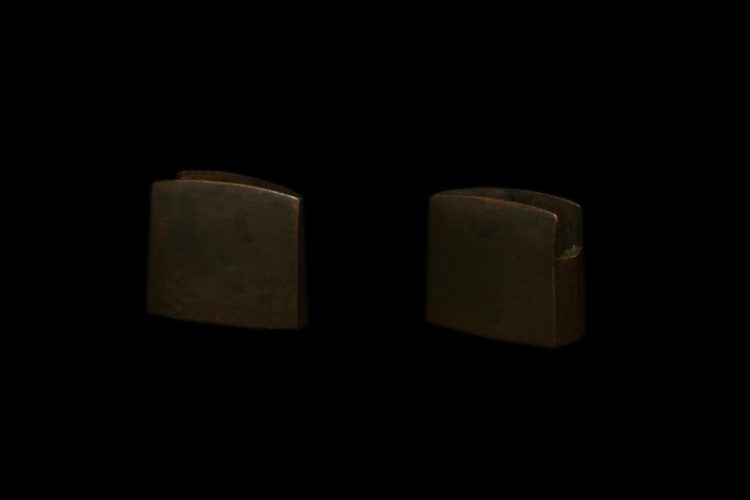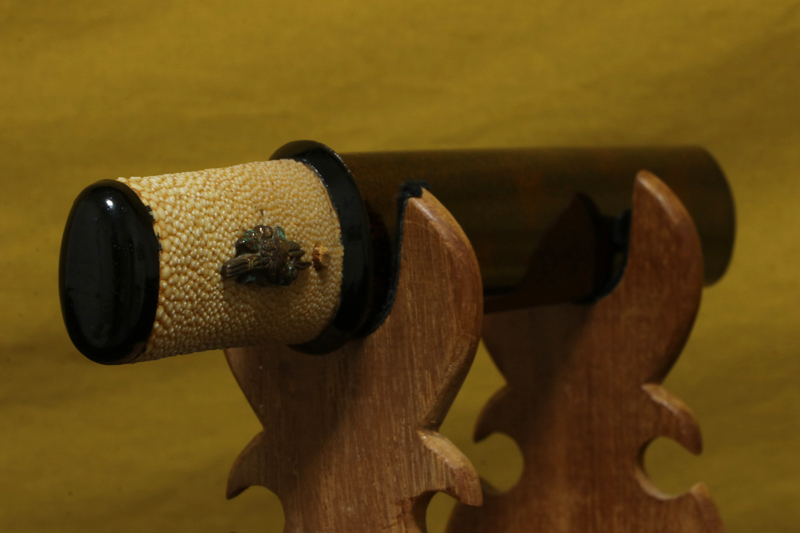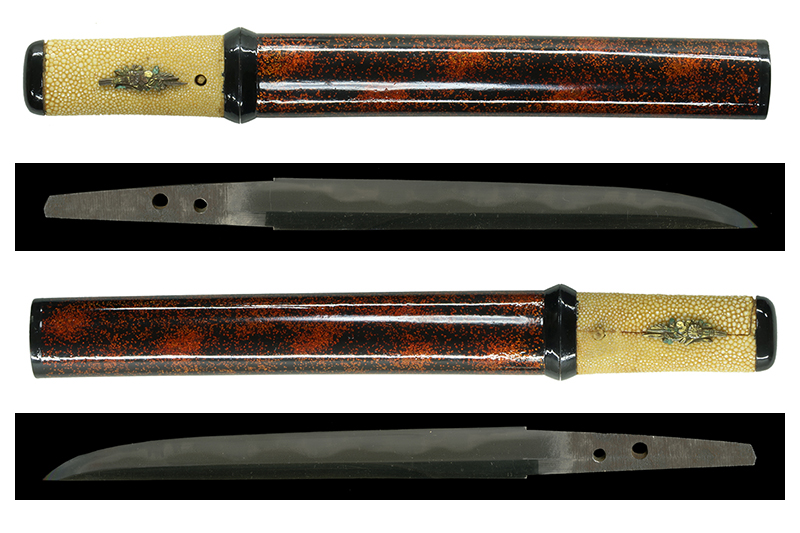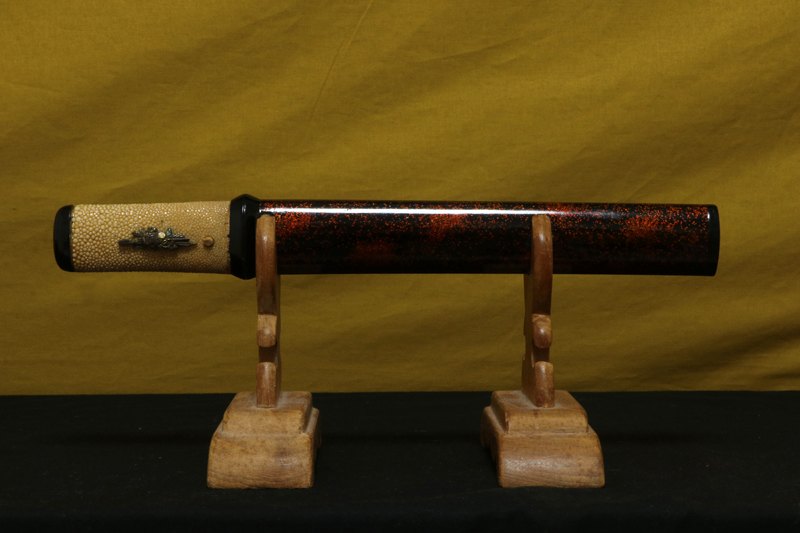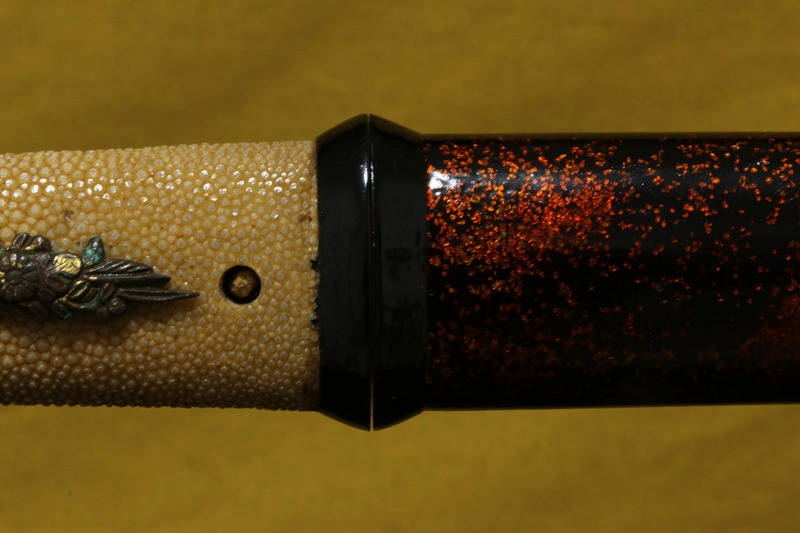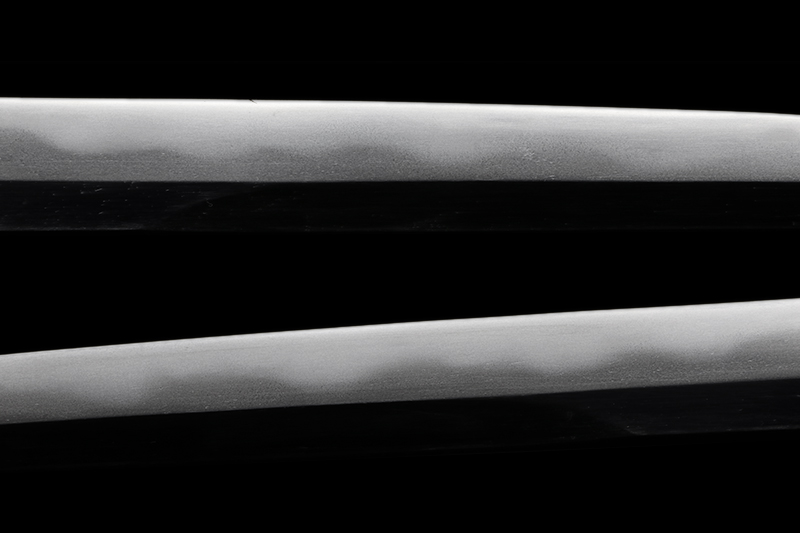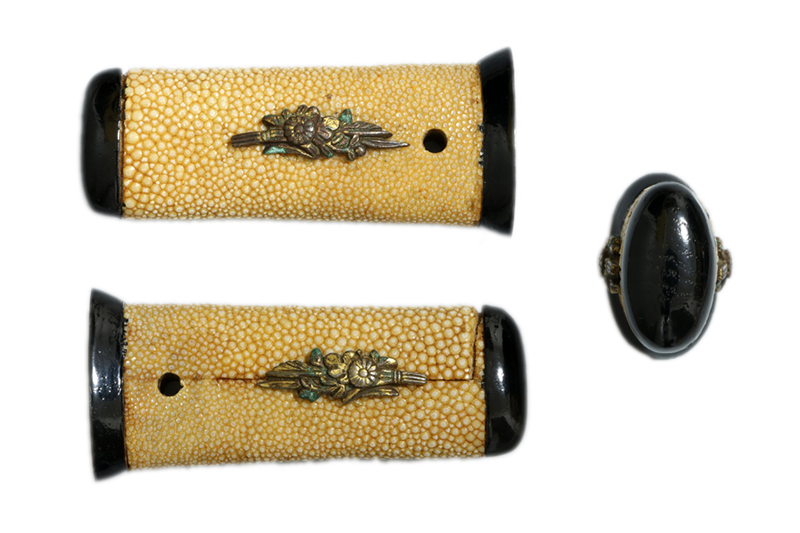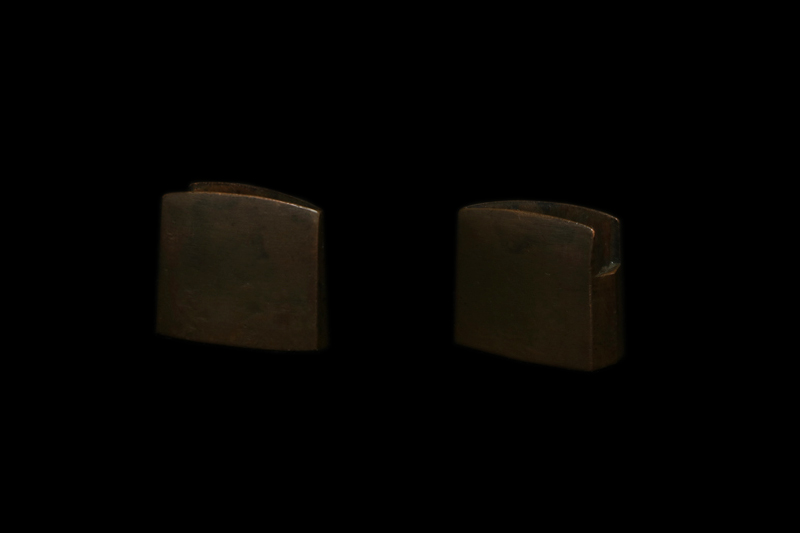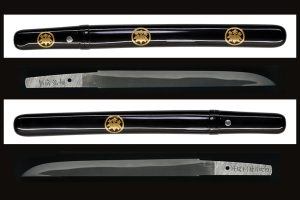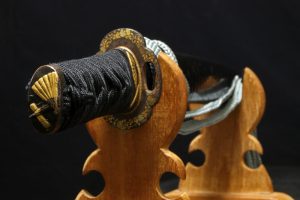説明
「刀姿 sword figure」
冠落とし造り庵棟、身幅重尋常、無反りふくら枯れる。茎は生で切鑢がかかる、茎尻は入山形。
「地鉄 jigane」
地鉄は小板目肌が良く詰み、地沸厚く付く。
「刃紋 hamon」
刃紋は互の目乱れ、刃縁微塵に沸が付き砂流しかかる、刃中は葉が入る。釯子は乱れ込み小丸に返る。
「特徴 detailed」
無銘の新々刀ですが、特徴から水戸住直江助共の作品と思われます。
直江助共は直江助政の子で水戸台町の生まれ、水心子正秀の弟子となり、後に水戸藩工となる。
天保四年から五年頃に父直江助政と共に水戸烈公の鍛刀相手鍛冶を勤めた。
後に烈公が助共の鍛冶場を訪れ、助共と子の助俊を相手に鍛刀したのは、天保十一年から天保十三年までの二年間で十四回に及び、殊に出来優れて刃味の良い作を十二代将軍徳川家慶に献上してその御意に叶い、日光社参道中の太刀は「水戸様御作に限り候」の言葉を得た。
本作は良く鍛えた地鉄に、微塵に沸の付いた互の目を焼いた素晴らしい懐剣です。
刀身に傷欠点は無く少しヒケが有りますが、錆や汚れは有りません。
懐剣拵は幕末の物で綺麗な鞘塗りがされています。
刀身・拵共、コンディションが良く、お守り短刀として最適です。
This unsigned shinshintō (late Edo period sword) is believed to be the work of Mito-jū Naoye Suketomo, based on its distinctive features.
Suketomo was the son of Naoye Sukemasa and was born in Taimachi, Mito. He became a disciple of Suishinshi Masahide and later served as a swordsmith for the Mito Domain. Around Tenpō 4–5 (1833–1834), he worked alongside his father as a swordsmith partnered with Tokugawa Nariaki (Rekkō), the Mito Domain lord. From Tenpō 11 to 13 (1840–1842), Lord Nariaki is recorded to have visited Suketomo’s forge 14 times, forging swords together with Suketomo and his son Suketoshi. Among these, particularly well-made and keenly edged blades were presented to the 12th shogun, Tokugawa Ieyoshi, and received high praise. Swords forged during the Nikko pilgrimage were noted with the statement: “Only those made by Lord Mito are permitted.”
This particular piece is a splendid kaiken, forged with a finely worked jigane and a gunome hamon adorned with minute nie. The blade has no flaws or damage, though there is a slight scuff (hike); however, there is no rust or staining.
The koshirae (mounting) is from the late Edo period, featuring beautifully lacquered saya (scabbard). Both the blade and the koshirae are in excellent condition, making this an ideal protective omamori tanto.
「拵 Koshirae」
ハバキ(habaki) :素銅地一重の縦鑢。
目貫(menuki) :素銅地金色絵菊の図。
柄(tsuka) :鮫は出し鮫。
鞘(saya) :金茶梨地塗り。
「刀剣の状態 condition of blade」
研:少しヒケが有りますが、概ね良好です。
傷:欠点になるような傷は有りません。

